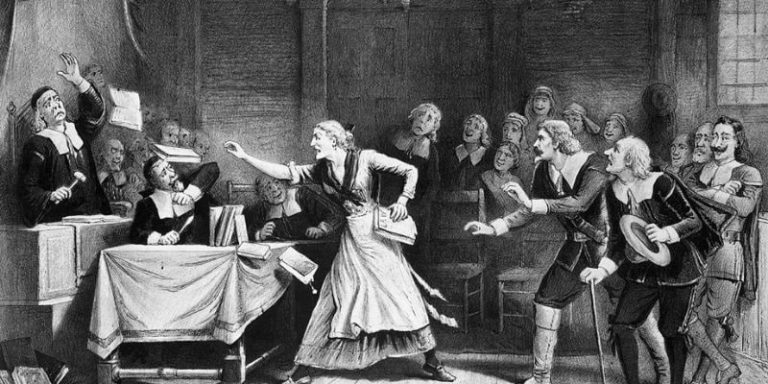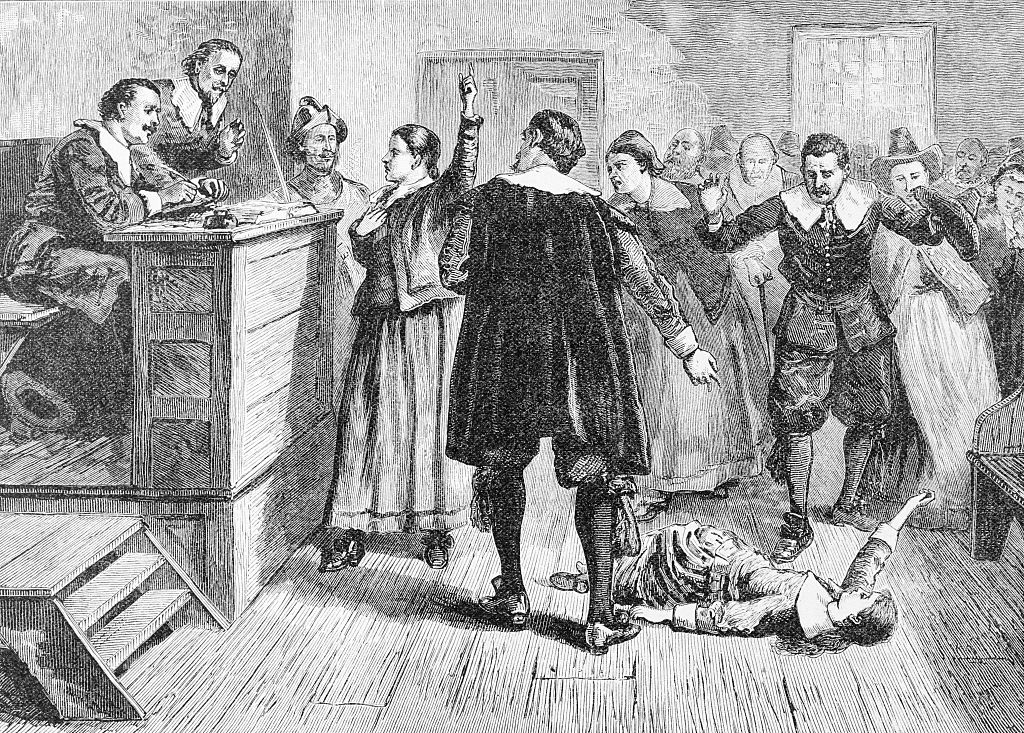Last Salem Witch May Soon be Pardoned
An eighth-grade class is working on a project to clear the woman’s name.
By: Kelli Ballard | September 2, 2021 | 535 Words

Witch trial in Salem, Massachusetts. Lithograph by George H. Walker. (Getty Images)
In 1692, the people of Salem, Massachusetts, thought they were surrounded by witchcraft. In just one year, 19 women and one man were executed after courts determined they were witches, which was a crime during that period. The trials were the “largest and most lethal witch hunt in American history,” wrote historian Emerson W. Baker. In 1957, state legislation officially pardoned those who had been convicted – all except one woman. Now, an eighth-grade civics class has researched and pushed for Elizabeth Johnson Jr’s name to be cleared as well.
Johnson was just 22 years old when she was accused of being a witch. At least 28 members of her family were also suspected, including aunts, her grandfather, and even her mother. Luckily, none of them were executed. Johnson was found guilty of practicing the “Devil’s magic” and was sentenced to hang. Her verdict came at the end of the hysteria in 1693, and William Phips, the governor at the time, felt there had been too much violence. He threw out her punishment. Still, she had been found guilty of witchcraft and that ruling did not change.
While the state legislation that was updated in 2001 officially cleared the names of all the other so-called witches, for some reason Johnson’s name was not included. State senator Diana DiZoglio, a Democrat, heard about the work the eighth-grade class was doing on Johnson’s behalf and has introduced legislation that, if passed, would clear the woman’s name.
“It is important that we work to correct history,” the senator said. “We will never be able to change what happened to these victims, but at the very least, we can set the record straight.”
No one knows why Johnson’s name was the only one that wasn’t cleared. DiZoglio theorized, “Possibly because she was neither a wife nor a mother, she was not considered worthy of having her name cleared. And because she never had children, there is no group of descendants acting on her behalf.”

Illustration entitled “WITCHCRAFT AT SALEM VILLAGE,” depicting a girl lying on a courtroom floor. Undated engraving.
Most of those who were accused of witchcraft were “women, enslaved individuals or poor people who transgressed social norms,” explained historian Connie Hassett-Walker, meaning that the people targeted were those people who didn’t fit in, or who were not favored at the time. “The Salem witch trials targeted those most vulnerable in colonial society, forcing women … to pay the highest possible price for nonconformity.”
The students began their project just before the COVID-19 pandemic hit. The impact of the virus had some of the kids questioning the need for continuing such a task. “Some of the conversation was, ‘Why are we doing this? She’s dead. Isn’t there more important stuff going on in the world?’” DiZoglio described. “But they came around to the idea that it’s important that in some small way we could do this one thing.”
In 2017, officials revealed a wall memorial at Proctor’s Ledge in Salem, the site believed to be where the witches were executed. The semi-circular stone wall is inscribed with the names of those who were hanged for witchcraft.
















